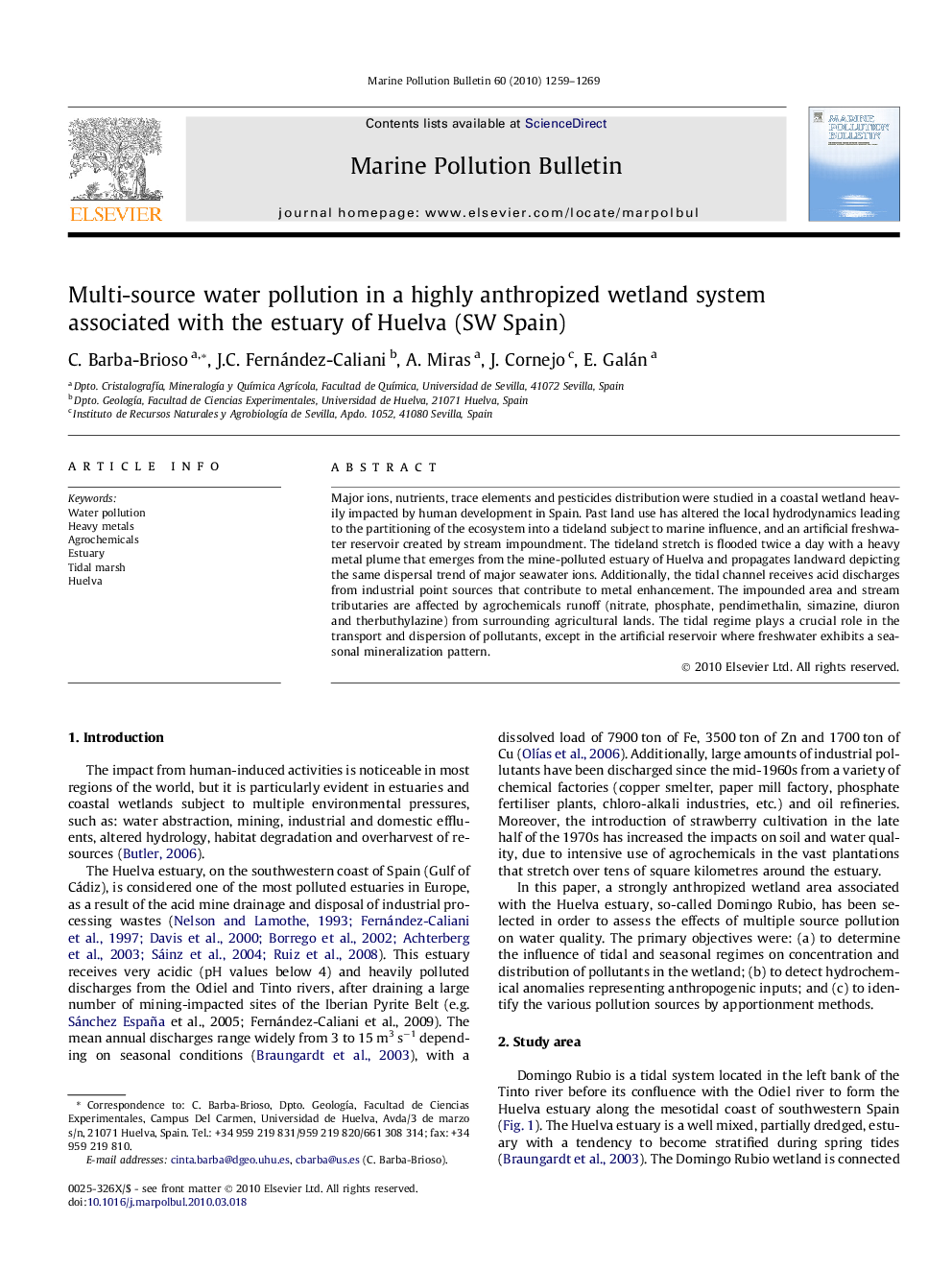| Article ID | Journal | Published Year | Pages | File Type |
|---|---|---|---|---|
| 6362571 | Marine Pollution Bulletin | 2010 | 11 Pages |
Abstract
Major ions, nutrients, trace elements and pesticides distribution were studied in a coastal wetland heavily impacted by human development in Spain. Past land use has altered the local hydrodynamics leading to the partitioning of the ecosystem into a tideland subject to marine influence, and an artificial freshwater reservoir created by stream impoundment. The tideland stretch is flooded twice a day with a heavy metal plume that emerges from the mine-polluted estuary of Huelva and propagates landward depicting the same dispersal trend of major seawater ions. Additionally, the tidal channel receives acid discharges from industrial point sources that contribute to metal enhancement. The impounded area and stream tributaries are affected by agrochemicals runoff (nitrate, phosphate, pendimethalin, simazine, diuron and therbuthylazine) from surrounding agricultural lands. The tidal regime plays a crucial role in the transport and dispersion of pollutants, except in the artificial reservoir where freshwater exhibits a seasonal mineralization pattern.
Related Topics
Physical Sciences and Engineering
Earth and Planetary Sciences
Oceanography
Authors
C. Barba-Brioso, J.C. Fernández-Caliani, A. Miras, J. Cornejo, E. Galán,
